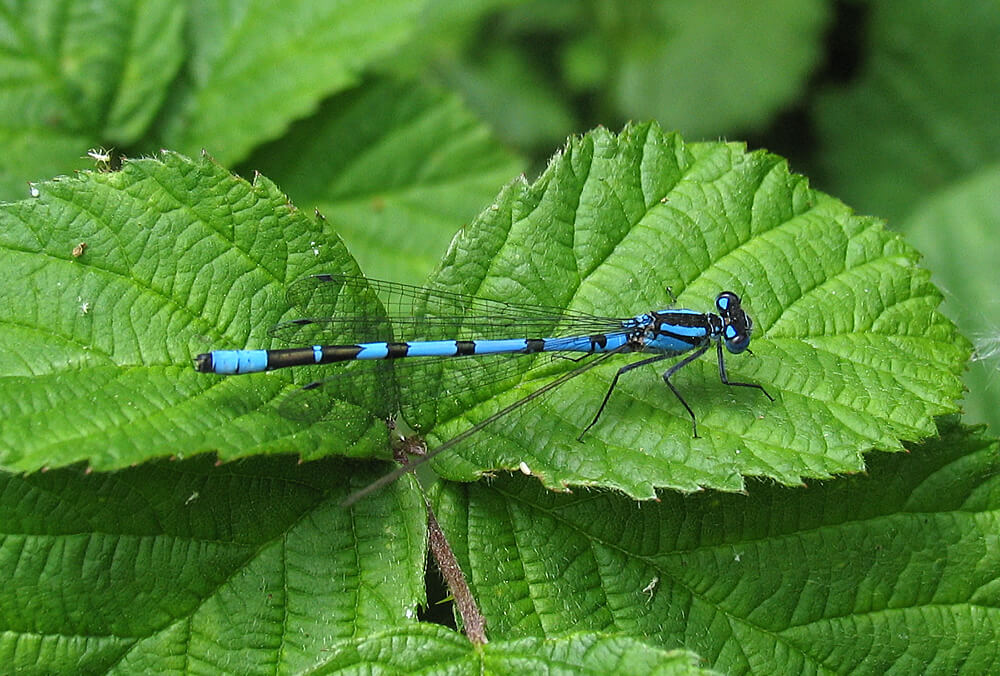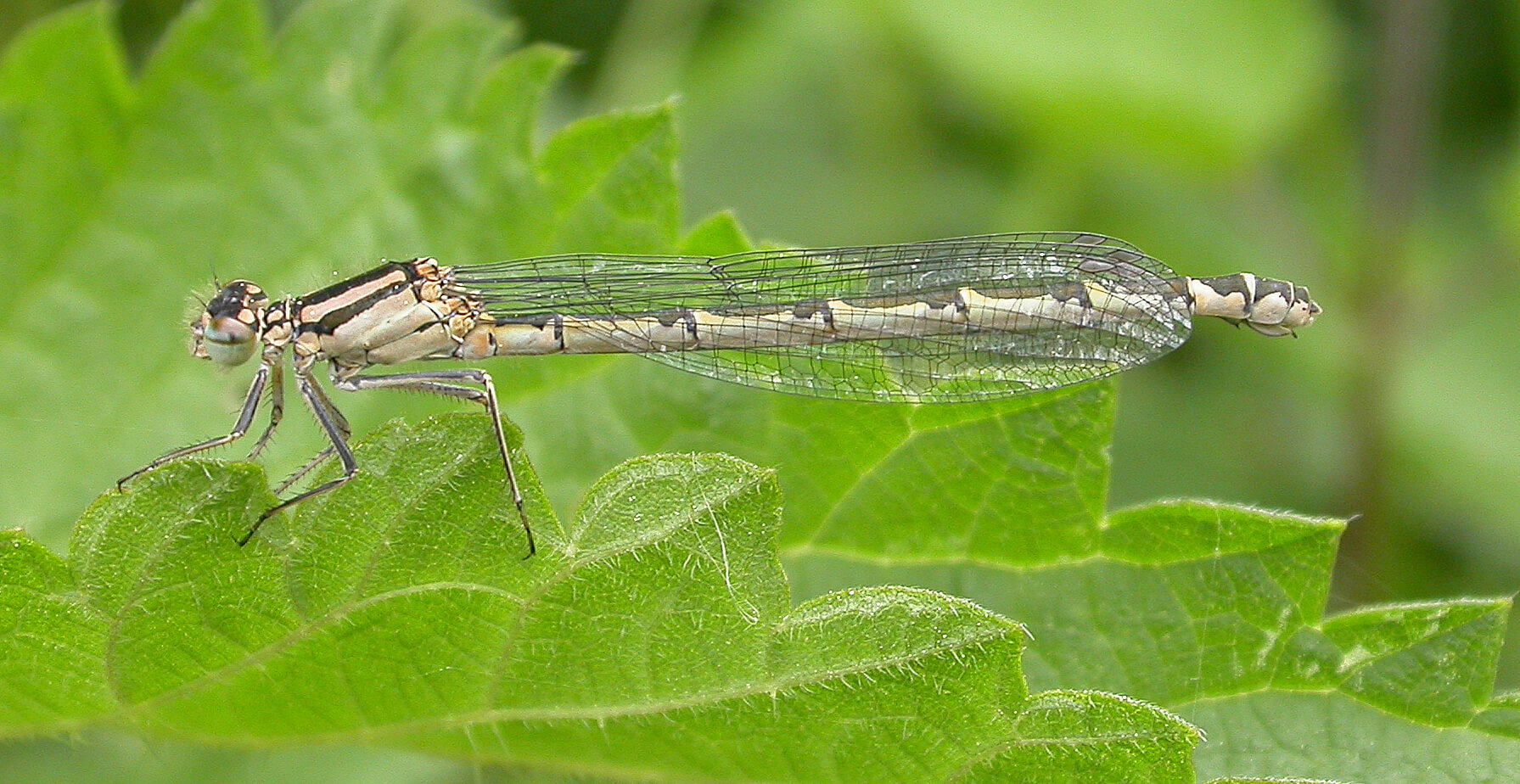Species Information:
Length: 32mm
Flight Period: April - September (occasionally October)
In many ways this could be considered to be the most typical British damselfly. It shares its blue and black colouration with several other species. It can be distinguished from the others by its broad ante-humeral stripes and all blue side to the thorax.
Male: segment 2 has a characteristic mark of a spot linked to the inter segment suture by a short line. Segment 8 and segment 9 are entirely blue.
Female: occurs in two colour forms, one blue, as in the male, the other dull green. The mark on segment 2 is thistle shaped and there is a "Christmas tree" shaped stepped triangle on S8. They often perch gregariously on emergent plant stems, all facing the same way.
Habitat:
It occurs in most waters and on large lakes is usually the most abundant species.
Status & Distribution:
Abundant throughout the British Isles.
Larval Information
No spotting on the back of the head. Three distinctive thin horizontal stripes on caudal lamellae (sometimes very faint).
Similar Species:
This species is easily confused with the various members of the genus Coenagrion. Look at S2 (on the males) for distinguishing characters. It does appear particularly blue compared with other similar species. The females can be particularly tricky to distinguish apart.

.jpg)
